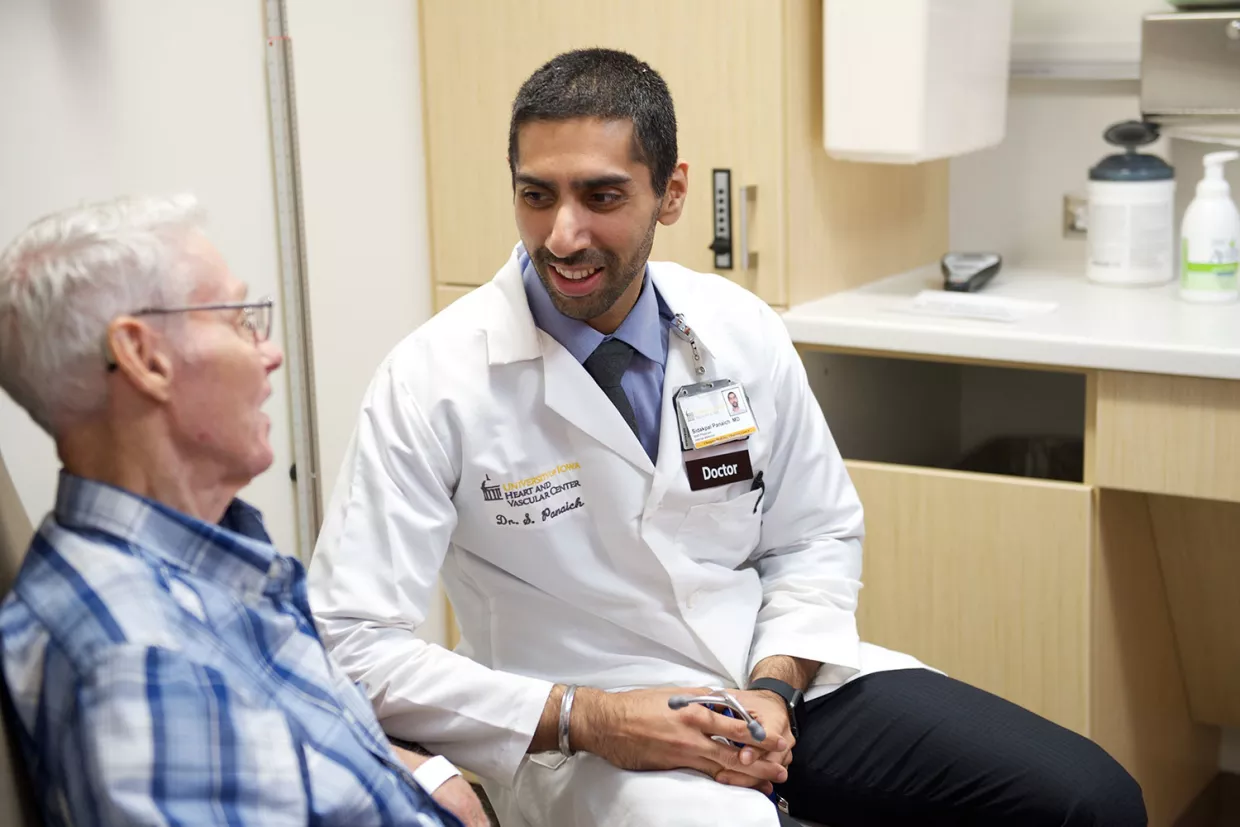BASILICA provides option for high-risk heart patients

Cardiologists at University of Iowa’s Heart and Vascular Center are the first in the state to use a new procedure that makes heart valve replacement safer for some high-risk patients, many of whom had no other options before.
The new procedure, called BASILICA—or bioprosthetic aortic scallop intentional laceration to prevent iatrogenic coronary artery obstruction—will increase the options for patients for whom traditional valve replacement procedures are too risky or simply won’t work, says Sidakpal Panaich, MBBS, an interventional cardiologist at the Heart and Vascular Center at UI Hospitals & Clinics.
The BASILICA will be used as part of a transcatheter aortic valve replacement (TAVR) surgery, a fairly common procedure used to treat aortic stenosis—the narrowing of a valve controlling the blood flow from the heart to the rest of the body.
A TAVR procedure involves threading a thin catheter through the femoral artery in the leg up to the heart, but for some patients whose hearts may have uncommon features—such as low origin of their coronary arteries, for instance—the procedure can lead to a blocked coronary artery, which can be fatal.
With BASILICA, the cardiologist inserts a thread-like electrified wire through a catheter and splits the leaflet in two, preventing a blockage once the TAVR is complete.
Another advantage is that BASILICA provides an immediate solution to a problem that previously would have required a second major surgery to fix.
“Among other things, we routinely check for high-risk features that could lead to coronary obstruction during TAVR procedure on pre-procedural CT scans,” Panaich says. “Outside of this new BASILICA procedure, such patients would have required open-heart surgery to prevent a blockage.”
While open-heart surgery is an option, Panaich says, it has its own risks and could be high risk in a number of patients. BASILICA provides a potential solution for those patients.
“This is an option for patients who previously had none,” Panaich says. “It allows more people to get a transcatheter valve replacement because for some they may not have been a candidate before.”
Learn more about transcatheter aortic valve replacements.